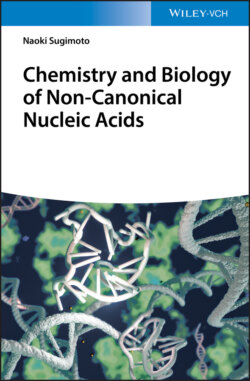Читать книгу Chemistry and Biology of Non-canonical Nucleic Acids - Naoki Sugimoto - Страница 46
3.2.2 Stacking Interactions
ОглавлениеThe π–π stacking interactions refer to the interactions between aromatic rings containing π orbitals in bases of nucleic acids. The individual bases make strong stacking interactions with neighboring bases, which are major contributors to duplex stability (Figure 3.2b). The stacking interactions are much more prevalent in duplexes than in single strands. Base-stacking interactions are London dispersion force interactions and depend on the aromaticity of the bases and their dipole moments. The degree of stabilization afforded by base stacking depends on the DNA sequence. Nearest-neighbor base-stacking interactions are important determinants of duplex stability. The values of free energy change at 37 °C (−Δ) due to stacking interactions during duplex formation are 0.4–1.6 kcal mol−1 [3].
Moreover, the stacking interactions increase with increasing salt concentration, as high salt concentrations mask the destabilizing charge repulsion between the two negatively charged phosphodiester backbones. The DNA duplex stability increases with increasing salt concentration.
